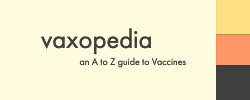Glyphosate is a weed killer (Roundup) that is famously made by Monsanto.
Glyphosate in Vaccines
So why is glyphosate in vaccines?
Well, so far, the only folks who are saying that you can find glyphosate in vaccines is an anti-GMO group that is against “chemical farming” and the use of glyphosate. This group feels that the United States should put a moratorium on glyphosate and Round Up. In fact, they want glyphospate and Round Up “banned NOW.”
This same group reported high levels of glyphosate in “drinking water, urine, and breast milk” back in 2014.
Not surprisingly, other reports soon followed that found that the “U.S. breast milk is glyphosate free.”
Another study, in Germany, reported that “From farm animal metabolism studies with radiolabeled glyphosate a very low transfer into muscle, milk and fat was observed.” They reported that “the positive findings of glyphosate in breast milk of American women could not be confirmed by our results. In none of the 114 breast milk samples collected from German women in August and September 2015 was glyphosate found within the detection limitations of the analytical methods.”
So is the anti-GMO group right this time, even though they used the same lab, Microbe Inotech Laboratories, Inc., and ELISA method to test vaccines for glyphosate that they did for breast milk?
First consider that they also reported finding glyphosate in canola oil and cow’s milk, in addition to vaccines. Why does that matter? Another recent study already reported that glyphosate “residues were not detected in soy milk, soybean oil, corn oil, maltodextrin, sucrose, cow’s milk, whole milk powder, or human breast milk.”
Next, their theory for how glyphosate might get in vaccines, by accumulating in one or more vaccine ingredients doesn’t make a lot of sense. Glyphosate is not usually known to accumulate much, instead being rapidly excreted.
And the levels of glyphosate they reportedly found? They ranged from 0.123 ppb (parts per billion) to 2.671 ppb. That would be much lower than substances in vaccines that are left over in residual amounts, which are often described in ppm (parts per million) amounts.
How tiny is ppb? One ppb is one part in 1 billion. Zane Satterfield, an engineering scientist, explains it this way:
One drop of ink in one of the largest tanker trucks used to haul gasoline would be an ink concentration of 1 ppb.
Or you could think of a ppb as:
- one silver dollar in a roll stretching from Detroit to Salt Lake City,
- one sheet in a roll of toilet paper stretching from New York to London,
- one second in nearly 32 years, or
- one pinch of salt in 10 tons of potato chips
That’s not to say that something at a ppb concentration can’t be bad. After all, lead in water above 15 ppb means you have to take steps to clean the water.
But glyphospate isn’t lead. Glyphosate is reported to have low toxicity for humans.
Michelle McGuire, a professor in the WSU School of Biological Sciences, and who did the studies that didn’t find glyphosate in US breast milk, says that she wouldn’t trust this new report on glyphosate in vaccines. According to Dr. McGuire, “unless the ELISA has been validated and optimized for the matrix of the vaccine, false positives are expected.”
More on Glyphosate in Vaccines
- Are There Hidden Ingredients in Vaccines?
- Who is Stephanie Seneff?
- Do Vaccines Contain Pesticides?
- Glyphosate herbicide in vaccines? Here is what frightened parents should know
- Moms for Pseudoscience – Roundup Edition
- U.S. breast milk is glyphosate free
- Weed Killer in Vaccines?
- Determination of Glyphosate Levels in Breast Milk Samples from Germany by LC-MS/MS and GC-MS/MS
- Analysis of Glyphosate and Aminomethylphosphonic Acid in Nutritional Ingredients and Milk by Derivatization with Fluorenylmethyloxycarbonyl Chloride and Liquid Chromatography–Mass Spectrometry
- Glyphosate – The New Bogeyman
- EPA Weighs In On Glyphosate, Says It Doesn’t Cause Cancer
- Glyphosate
- Glyphosate causes cancer
Last Updated on August 11, 2019
